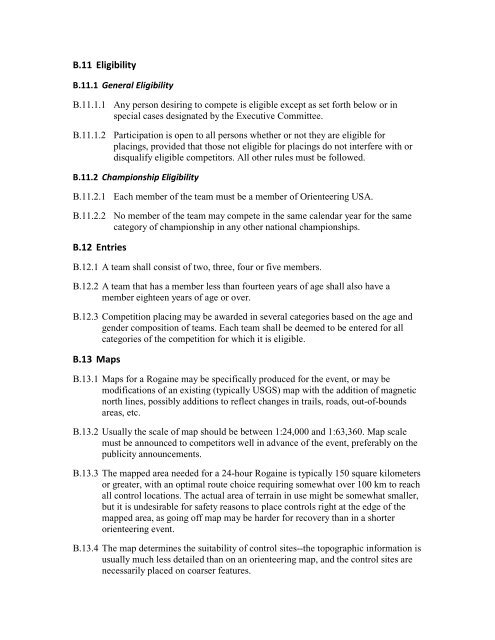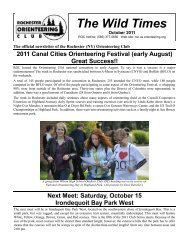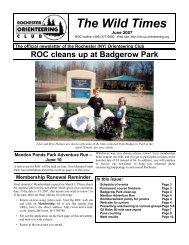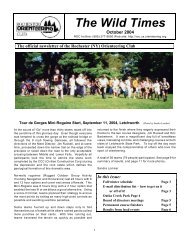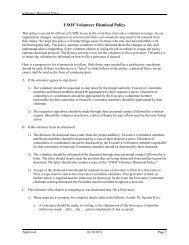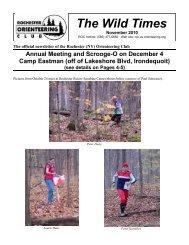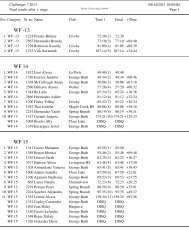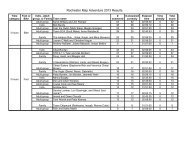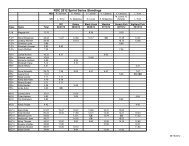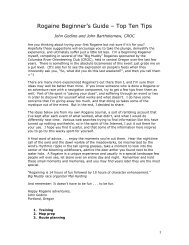A Rules for Foot Orienteering Events - Orienteering USA
A Rules for Foot Orienteering Events - Orienteering USA
A Rules for Foot Orienteering Events - Orienteering USA
Create successful ePaper yourself
Turn your PDF publications into a flip-book with our unique Google optimized e-Paper software.
B.11 Eligibility<br />
B.11.1 General Eligibility<br />
B.11.1.1 Any person desiring to compete is eligible except as set <strong>for</strong>th below or in<br />
special cases designated by the Executive Committee.<br />
B.11.1.2 Participation is open to all persons whether or not they are eligible <strong>for</strong><br />
placings, provided that those not eligible <strong>for</strong> placings do not interfere with or<br />
disqualify eligible competitors. All other rules must be followed.<br />
B.11.2 Championship Eligibility<br />
B.11.2.1 Each member of the team must be a member of <strong>Orienteering</strong> <strong>USA</strong>.<br />
B.11.2.2 No member of the team may compete in the same calendar year <strong>for</strong> the same<br />
category of championship in any other national championships.<br />
B.12 Entries<br />
B.12.1 A team shall consist of two, three, four or five members.<br />
B.12.2 A team that has a member less than fourteen years of age shall also have a<br />
member eighteen years of age or over.<br />
B.12.3 Competition placing may be awarded in several categories based on the age and<br />
gender composition of teams. Each team shall be deemed to be entered <strong>for</strong> all<br />
categories of the competition <strong>for</strong> which it is eligible.<br />
B.13 Maps<br />
B.13.1 Maps <strong>for</strong> a Rogaine may be specifically produced <strong>for</strong> the event, or may be<br />
modifications of an existing (typically USGS) map with the addition of magnetic<br />
north lines, possibly additions to reflect changes in trails, roads, out-of-bounds<br />
areas, etc.<br />
B.13.2 Usually the scale of map should be between 1:24,000 and 1:63,360. Map scale<br />
must be announced to competitors well in advance of the event, preferably on the<br />
publicity announcements.<br />
B.13.3 The mapped area needed <strong>for</strong> a 24-hour Rogaine is typically 150 square kilometers<br />
or greater, with an optimal route choice requiring somewhat over 100 km to reach<br />
all control locations. The actual area of terrain in use might be somewhat smaller,<br />
but it is undesirable <strong>for</strong> safety reasons to place controls right at the edge of the<br />
mapped area, as going off map may be harder <strong>for</strong> recovery than in a shorter<br />
orienteering event.<br />
B.13.4 The map determines the suitability of control sites--the topographic in<strong>for</strong>mation is<br />
usually much less detailed than on an orienteering map, and the control sites are<br />
necessarily placed on coarser features.


